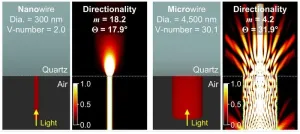(Press-News.org) Every year in the United States, an estimated 476,000 people are diagnosed and treated for Lyme disease. The estimate comes from the U.S. Centers for Disease Control and Prevention (CDC).
Lyme disease can be treated with antibiotics. The best health outcomes are most likely when diagnosis is made within the first weeks of infection. If left untreated, the effects of Lyme disease can linger for years and cause neurological problems, arthritis, and a host of other ailments. But because diagnosing Lyme can be difficult, some cases of the disease go undetected long after initial transmission.
To help clinicians improve Lyme disease outcomes, physician-scientists at Rutgers New Jersey Medical School and Stony Brook University have published a guidance article in NEJM Evidence, The New England Journal of Medicine’s digital digest, on the informed evaluation and treatment of Lyme in its early stages.
Lead author Steven E. Schutzer, a professor of medicine at Rutgers Health, discussed how clinicians can approach patients who have the possibility of an early Lyme disease infection.
Lyme disease is increasingly prevalent and yet many cases go undetected, at least in the early stages. Why is this illness sometimes difficult to diagnose?
The most common sign of Lyme disease is erythema migrans, a bull’s-eye or target-like skin lesion that is often the hallmark sign of the Lyme bacterial infection. But that rash doesn’t occur in all patients, nor is it always recognized or noticed by patients when it does occur.
Currently, the only Food and Drug Administration (FDA)-approved tests are antibody tests; it can take weeks or longer before a patient mounts a sufficient immune response detectable by these assays.
Another complicating issue is that once somebody has had Lyme disease, they could be positive on the antibody tests for years to life. This can create a quandary for doctors assessing a patient with a suspected new case of Lyme disease.
Beyond the rash, what are some other symptoms?
In the early stages, patients might present with a flu-like set of symptoms, but without respiratory symptoms. These symptoms can include fever, headache, muscle aches, joint aches, and fatigue. Patients will likely not have a severe cough, as they would with influenza or another respiratory virus.
Neurological symptoms can also develop, including headaches. But many of these symptoms can be due to other illnesses. For example, meningitis may be due to other microbes and may warrant a spinal tap to get the right diagnosis and treatment.
Because Lyme-infected ticks can also transmit other pathogens, such as those causing anaplasmosis and babesiosis, patients infected with Lyme have a higher likelihood of co-infections.
What tests are currently available to clinicians for Lyme?
The CDC and others recommend doctors use a two-tier blood antibody (against Borrelia burgdorferi-the cause of Lyme) testing approach. The first-tier test, in its most optimal form, is a sensitive semi-quantitative test. It’s akin to casting a wide net. If the test yields a borderline or positive result, it must be followed up with a second-tier test that measures antibodies that are more specific to Borrelia burgdorferi. This is used as a confirmatory test.
The most common first-tier type of test is an ELISA. For many years, the second-tier test was only a Western blot, which provided a visual view of the results. Some of its drawbacks were that interpretation was often subjective and the test itself took more time. A new FDA-approved substitute is to use a second ELISA-type test.
Your paper is designed to assist primary care clinicians in how they should approach a patient with possible early Lyme disease. It’s based on recommendations from several leading medical societies and federal public health agencies. Can you provide some specifics?
It’s essential that doctors don't get tunnel vision on Lyme. Once antibiotics are administered, they may blunt the patient’s antibody response and disrupt what blood tests show.
Thus, doctors should assess the criteria for positivity, and consider mitigating factors. Has the patient been in an endemic area? Are there other skin lesions? Has a neurological exam been conducted to rule out other treatable diseases. Clinicians should always be thinking what else can this be, other than Lyme, and have a low threshold for coordinating with colleagues in other specialties, like neurology and cardiology, to make informed diagnoses and management decisions. This should be an evolving process as new knowledge is acquired.
You also discuss the optimal timing of testing. Can you elaborate?
During the first few weeks of a first-time Lyme infection, the antibody response is usually negative on the conventional two-tier tests before the body has time to mount a detectable immune response. On the other end of the spectrum, if more than a month has passed since the onset of infection and before treatment, it’s more common to have a positive test. It’s during this early phase of infection that is the most problematic for doctors.
Most commercial laboratories won’t freeze a sample and wait for a second blood draw to test simultaneously. What doctors can do to get around this is to draw a second blood sample and send it to the same laboratory for the same test and then compare the results to see if there is some evidence of moving toward positivity in the intervening days to weeks before making a diagnosis.
You clearly focused the article on what the clinicians have available now, but what can we expect in the future?
This is not a static field. Researchers are working to develop tests that are even more accurate and can be used earlier. This includes detecting DNA of the Lyme agent. Researchers are also looking for early molecular messages from the body in response to an infection. Other investigators are working with the help of clinicians on immediate point-of-care tests. Rigorous confirmation of their accuracy and reproducibility would be the intermediary step towards providing them for routine clinical use.
What is the current outlook for most patients?
Fortunately, the outlook is good for most patients with early Lyme disease when an alert clinician recognizes it and begins treatment. Most patients will return to their normal health. The goal of our article is to foster this outcome.
END
Decoding early Lyme disease
A Rutgers Health physician-scientist publishes guidance for primary care doctors diagnosing and treating early Lyme disease, a bacterial infection
2024-07-23
ELSE PRESS RELEASES FROM THIS DATE:
Non-coding RNAs affect breast cancer development through the notch signaling pathway
2024-07-23
Breast cancer (BC) remains one of the most challenging cancers to treat, primarily due to its heterogeneity and propensity for metastasis. The Notch signaling pathway is integral to various cellular processes and has been implicated in the development and progression of BC. NcRNAs, including microRNAs (miRNAs), long non-coding RNAs (lncRNAs), and circular RNAs (circRNAs), have emerged as pivotal regulators of gene expression, affecting cancer biology through their interactions with the Notch pathway.
Non-coding ...
Is a gamma-ray laser possible?
2024-07-23
Since the laser was invented in the 1960s, scientists have been working to increase lasers’ peak power and to design machines producing coherent light at progressively shorter wavelengths that can improve image resolution and enable probing of quantum nuclear states.
Progress has been made with regard to peak power, most notably with the invention of chirped pulse amplification by University of Rochester researchers in the 1980s, a breakthrough that garnered the Nobel Prize in Physics in 2018. However, developing ...
Dual action antibiotic could make bacterial resistance nearly impossible
2024-07-23
A new antibiotic that works by disrupting two different cellular targets would make it 100 million times more difficult for bacteria to evolve resistance, according to new research from the University of Illinois Chicago.
For a new paper in Nature Chemical Biology, researchers probed how a class of synthetic drugs called macrolones disrupt bacterial cell function to fight infectious diseases. Their experiments demonstrate that macrolones can work two different ways – either by interfering with protein production or corrupting DNA structure.
Because bacteria would need to implement ...
Salk Professor Janelle Ayres named Howard Hughes Medical Institute Investigator
2024-07-23
LA JOLLA (July 23, 2024)—Salk Professor Janelle Ayres has been selected as a 2024 Howard Hughes Medical Institute (HHMI) Investigator. The HHMI Investigators program awards established scientists with approximately $9 million in funding over seven years to pursue boundary-breaking research in their field. The honor recognizes her influential work in immunology and microbiology and its applications to the global crisis of antibiotic resistance.
Ayres is among 26 other 2024 selectees, who will join more than 250 standing Investigators—including Salk Professors ...
NLM extends commitment to LOINC with $5 million award
2024-07-23
INDIANAPOLIS -- The National Library of Medicine has awarded Regenstrief Institute a five-year, $5 million contract extension to ensure the continued maintenance, expansion and public distribution of LOINC®, a global standard for health terminology. The NLM issued its initial contract to support the creation and development of LOINC in 1999. With this extension, NLM's commitment to LOINC will reach 30 years by the time the award expires in 2029.
“The NLM’s continued support of LOINC demonstrates the value the standard delivers to patients, care providers, health ...
Light emission from nanostructures, revealed using 3D printing method for the first time
2024-07-23
Dr. Jaeyeon Pyo’s team at the Korea Electrotechnology Research Institute (KERI) has become the first in the world to reveal light emission patterns from 3D-printed nanowires, which has been published as a cover article in the prestigious scientific journal ACS Nano.
The higher resolution in display devices signifies the more of pixels in a given screen size. As pixel density increases, movies and images are displayed with greater precision and detail. In this regard, ongoing research aims to fabricate ...
HHMI invests over $300 million in 26 new investigators
2024-07-23
The Howard Hughes Medical Institute announced on July 23, 2024 that 26 of the nation’s leading scientists have been named HHMI Investigators.
Paving the way for new scientific and biomedical discoveries in fields ranging from neuroscience to immunology to structural biology, these scientists come from 19 US institutions and join HHMI’s current Investigator community, comprising more than 250 scientists.
HHMI will invest more than $300 million in this newest cohort over the next seven years, enabling each Investigator to push the boundaries of science.
“HHMI is committed to supporting visionary scientists who are pursuing discoveries that will change ...
Blood pressure high for years? Beware of stroke risk
2024-07-23
High blood pressure is known to increase a person’s chances of having a stroke.
But a study led by Michigan Medicine narrows in on the cumulative effects of years of high systolic blood pressure — the top number on the blood pressure reading and how hard the heart pumps blood to the arteries — finding that a higher average reading during adulthood is linked with a greater risk for the two most common types of stroke.
The study, published in JAMA Network Open, analyzed the average systolic blood pressure years ahead of the first stroke for more than 40,000 people ...
IMDEA Software creates FIXCHECK, a novel approach that improves automatic software repair by generating test cases revealing defects in 62% of incorrect patches
2024-07-23
IMDEA Software researchers Facundo Molina, Juan Manuel Copia and Alessandra Gorla present FIXCHECK, a novel approach to improve patch fix analysis that combines static analysis, randomized testing and large language models. Their innovations, embodied in the paper: "Improving Patch Correctness Analysis via Random Testing and Large Language Models" were presented at the International Conference on Software Testing, Verification and Validation (ICST 2024).
Context
Generating patches that fix software defects is a crucial task in the maintenance of software systems. Typically, software ...
New car smell reaches toxic levels on hot days
2024-07-23
A study of volatile organic compounds (VOCs) emitted by new cars on hot summer days finds concerning levels of formaldehyde and other aldehydes. Consumers are familiar with—and even drawn to—the “new car smell” produced as VOCs from carpets, upholstery, and other interior materials in newly manufactured passenger vehicles. These VOCs can cause a range of health effects, including headaches, inflammation of the eyes, nose and throat, fatigue, irritability, dry cough, lung disease, and disorientation. Jianyin Xiong, Shaodan Huang, and colleagues sought to capture the levels of VOCs in the passenger cabins of new cars on ...
LAST 30 PRESS RELEASES:
Tracing the quick synthesis of an industrially important catalyst
New software sheds light on cancer’s hidden genetic networks
UT Health San Antonio awarded $3 million in CPRIT grants to bolster cancer research and prevention efforts in South Texas
Third symposium spotlights global challenge of new contaminants in China’s fight against pollution
From straw to soil harmony: International team reveals how biochar supercharges carbon-smart farming
Myeloma: How AI is redrawing the map of cancer care
Manhattan E. Charurat, Ph.D., MHS invested as the Homer and Martha Gudelsky Distinguished Professor in Medicine at the University of Maryland School of Medicine
Insilico Medicine’s Pharma.AI Q4 Winter Launch Recap: Revolutionizing drug discovery with cutting-edge AI innovations, accelerating the path to pharmaceutical superintelligence
Nanoplastics have diet-dependent impacts on digestive system health
Brain neuron death occurs throughout life and increases with age, a natural human protein drug may halt neuron death in Alzheimer’s disease
SPIE and CLP announce the recipients of the 2025 Advanced Photonics Young Innovator Award
Lessons from the Caldor Fire’s Christmas Valley ‘Miracle’
Ant societies rose by trading individual protection for collective power
Research reveals how ancient viral DNA shapes early embryonic development
A molecular gatekeeper that controls protein synthesis
New ‘cloaking device’ concept to shield sensitive tech from magnetic fields
Researchers show impact of mountain building and climate change on alpine biodiversity
Study models the transition from Neanderthals to modern humans in Europe
University of Phoenix College of Doctoral Studies releases white paper on AI-driven skilling to reduce burnout and restore worker autonomy
AIs fail at the game of visual “telephone”
The levers for a sustainable food system
Potential changes in US homelessness by ending federal support for housing first programs
Vulnerability of large language models to prompt injection when providing medical advice
Researchers develop new system for high-energy-density, long-life, multi-electron transfer bromine-based flow batteries
Ending federal support for housing first programs could increase U.S. homelessness by 5% in one year, new JAMA study finds
New research uncovers molecular ‘safety switch’ shielding cancers from immune attack
Bacteria resisting viral infection can still sink carbon to ocean floor
Younger biological age may increase depression risk in older women during COVID-19
Bharat Innovates 2026 National Basecamp Showcases India’s Most Promising Deep-Tech Ventures
Here’s what determines whether your income level rises or falls
[Press-News.org] Decoding early Lyme diseaseA Rutgers Health physician-scientist publishes guidance for primary care doctors diagnosing and treating early Lyme disease, a bacterial infection


